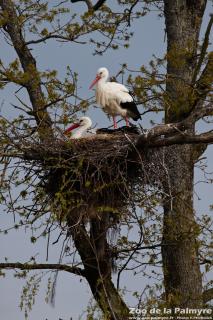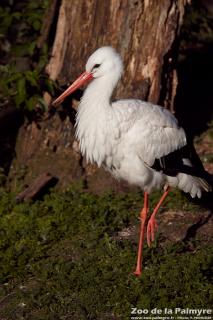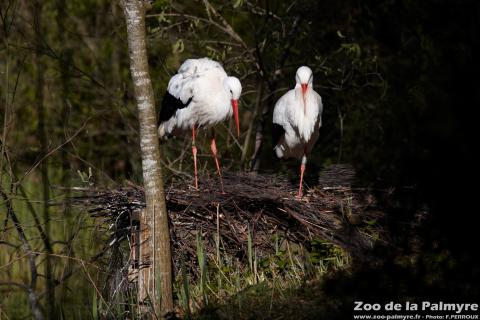White Stork

White Stork

-
Class
Aves -
Order
Ciconiiformes -
Familly
Ciconiidae
-
 105-115cm
105-115cm -
 2.3-4.4kg
2.3-4.4kg -
 33 days
33 days -
 3-5
3-5 -
 20 years
20 years
-
Diet
carnivorous (insects, fish, crustaceans, small reptiles, small rodents...) -
Habitat
wetlands and prairies in the vicinity of human dwellings -
Range
Europe, Africa, Middle East, India, Central Asia -
Population in the wild
En augmentation -
IUCN REDLIST status


Storks’ nests are vast platforms made of branches that can reach up to 2m in diameter and 2m in height and weigh several hundred kilos! They are built at the top of buildings or pylons and in trees. A nest can be used by the same couple for several years.
Baby storks feed themselves from birth by ingesting food regurgitated by both parents in the nest. They consume up to 60% of their own weight in food every day until the age of 9 weeks, when they leave the nest.
To greet their partner or defend their nest, storks make dry snapping noises with their beaks. They are said to ‘chirp’ or ‘tap’.
White Storks breed in Europe in springtime, then migrate south from August. They overwinter in Africa where, unlike in Europe, there are abundant sources of food. The young only come back to Europe after reaching sexual maturity at the age of about 2 or 3 years.
At the beginning of the 20th century, Alsace was home to thousands of stork couples, but at the beginning of the 1980s only a few dozen couples were counted. Thanks to captive breeding and reintroduction, as well as the building of artificial nesting platforms, numbers have increased again in Spain, France and Eastern Europe. However, storks are still endangered on numerous fronts, by the draining of swamplands, more intensive farming, hunting in the regions where they overwinter, the use of pesticides, and being electrocuted on overhead power lines.





